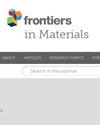Local thermal warpage deformation of polypropylene injection molded flat part and neural network prediction model
IF 2.6
4区 材料科学
Q3 MATERIALS SCIENCE, MULTIDISCIPLINARY
引用次数: 0
Abstract
Warpage deformation is a typical phenomenon for polymer injection-molded parts, mainly caused by unbalanced cooling, and it is inevitable. Complex process parameters usually lead to uncontrollable thermal behavior of the polymer materials during injection molding and significant experimental errors. This work presents an experimental mold with a flat mold cavity and nine local heating sections to determine the exact effect of temperature difference on the thermal deformation of injection molded parts. Through local heating at different positions, different warpage deformation was caused. Experimental results demonstrated the relationship between the local temperature and the local thermal warpage. The predicted results of local temperature distribution by numerical simulation presented a strong negative correlation with the experimental results (聚丙烯注塑扁平部件的局部热翘曲变形及神经网络预测模型
翘曲变形是聚合物注塑件的典型现象,主要由不均衡的冷却造成,而且不可避免。复杂的工艺参数通常会导致聚合物材料在注塑成型过程中出现不可控的热行为,并产生显著的实验误差。本研究提出了一种具有扁平模腔和九个局部加热部分的实验模具,以确定温差对注塑件热变形的确切影响。通过不同位置的局部加热,产生了不同的翘曲变形。实验结果表明了局部温度与局部热翘曲之间的关系。数值模拟对局部温度分布的预测结果与实验结果呈很强的负相关(R2 = 67%);然而,数值模拟对翘曲的预测结果却一般(R2 = 35%)。在实验结果的基础上,进一步利用神经网络进行了机器学习。当给出更多数据并采用合适的神经网络结构时,模型对翘曲的预测准确率可达 97%,而对于外推法试验,预测准确率也可达 89%。这种局部热加热技术和神经网络建模方法可用于注塑成型零件翘曲的进一步理论研究,并支持开发预测翘曲变形精度高的新模型。
本文章由计算机程序翻译,如有差异,请以英文原文为准。
求助全文
约1分钟内获得全文
求助全文
来源期刊

Frontiers in Materials
Materials Science-Materials Science (miscellaneous)
CiteScore
4.80
自引率
6.20%
发文量
749
审稿时长
12 weeks
期刊介绍:
Frontiers in Materials is a high visibility journal publishing rigorously peer-reviewed research across the entire breadth of materials science and engineering. This interdisciplinary open-access journal is at the forefront of disseminating and communicating scientific knowledge and impactful discoveries to researchers across academia and industry, and the public worldwide.
Founded upon a research community driven approach, this Journal provides a balanced and comprehensive offering of Specialty Sections, each of which has a dedicated Editorial Board of leading experts in the respective field.
 求助内容:
求助内容: 应助结果提醒方式:
应助结果提醒方式:


